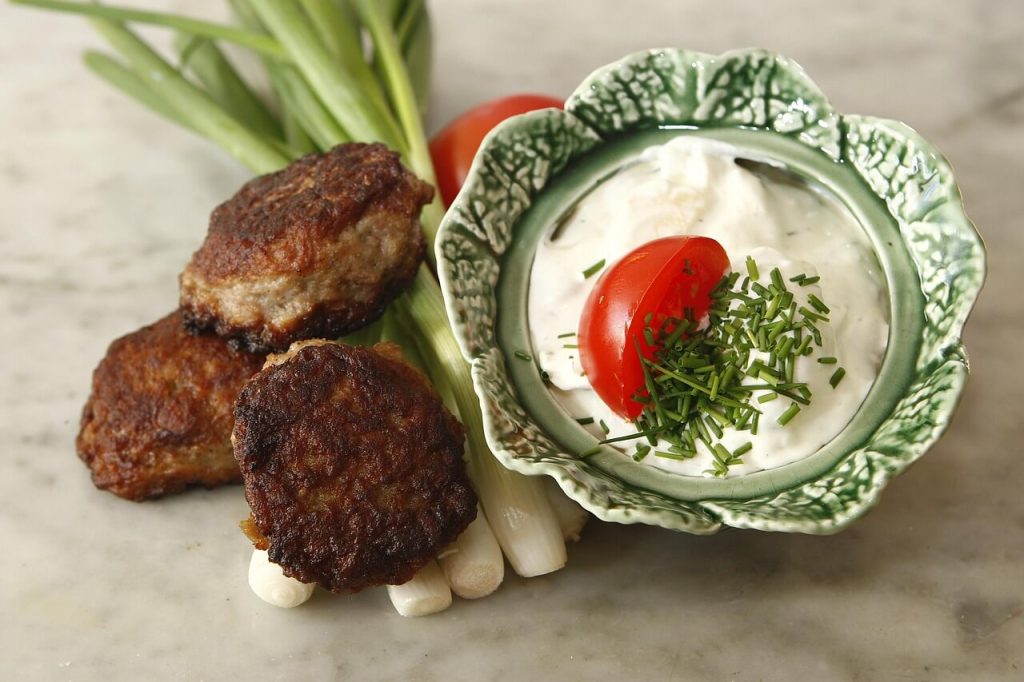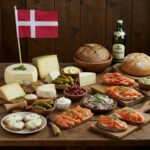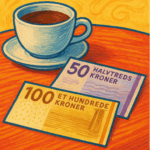When it comes to Danish food, you might think of pastries or smørrebrød, but the culinary culture of Denmark goes much deeper.
From traditional meals to everyday food, Danish cuisine is a delightful blend of simplicity, freshness, and rich flavors.
If you’re curious about what Danish people eat on a daily basis, you’re in for a treat. Let’s dive into the heart of Denmark’s food culture and explore the dishes that define it.
Table of Contents
Traditional Danish Food
Danish food is deeply rooted in tradition, with recipes passed down through generations.
One of the most iconic traditional dishes is smørrebrød, an open-faced sandwich typically made with rye bread and topped with ingredients like pickled herring, roast beef, or eggs.
Another classic is frikadeller, Danish meatballs often served with potatoes and gravy. These dishes reflect the Danish love for hearty, wholesome meals.

Historical Influences on Danish Cuisine
Danish food has been shaped by the country’s agricultural heritage and proximity to the sea.
Historically, Denmark was a farming nation, which is why dishes like stegt flæsk (fried pork belly) and grønlangkål (kale stew) are staples.
Coastal regions have also contributed seafood favorites like fiskefrikadeller (fish cakes) and røget ål (smoked eel).
Did you know that Denmark is the second-largest exporter of pork in the world?1 This explains why pork features prominently in many Danish recipes.
From Christmas dinners to everyday meals, pork is a cornerstone of Danish food culture.
Everyday Food in Denmark
While traditional Danish food is celebrated, everyday meals in Denmark are often simpler and more practical.
A typical Danish breakfast might include rugbrød (rye bread) with cheese or jam, while lunch could be a quick smørrebrød or a salad. Dinner often features fish or meat with vegetables and potatoes.
Danish Open Sandwiches
Smørrebrød isn’t just for special occasions—it’s a common everyday food in Denmark.

Whether you’re grabbing a quick lunch or enjoying a leisurely meal, these open-faced sandwiches are a go-to. Toppings vary widely, from cold cuts and fish to eggs and spreads, making smørrebrød a versatile and satisfying choice.
Modern Twists on Traditional Dishes
Modern Danish chefs are putting creative spins on traditional recipes, blending old and new flavors.
For example, you might find new Nordic cuisine dishes that use locally sourced, seasonal ingredients in innovative ways.
This movement has put Danish food on the global culinary map, with Copenhagen being home to several Michelin-starred restaurants.
Popular Danish Ingredients
What makes Danish food so unique? It’s the ingredients. Fresh, locally sourced produce and proteins are at the heart of Danish cooking. Here are some of the most common ingredients you’ll find in Danish kitchens:
- Rye bread: A staple in Danish households, rye bread is dense, nutritious, and perfect for smørrebrød.
- Pickled herring: A must-have for traditional Danish feasts, herring is often served with onions and sour cream.
- Potatoes: Whether boiled, mashed, or roasted, potatoes are a key side dish in Danish meals.
- Dairy: Denmark is famous for its high-quality dairy products, especially cheese and butter.
FAQ About Danish Food
What is the most popular Danish dish?
While there are many contenders, smørrebrød is arguably the most popular Danish dish. Its versatility and cultural significance make it a favorite among locals and tourists alike.
Is Danish food healthy?
Yes, Danish food is generally healthy, with an emphasis on fresh, whole ingredients.
Dishes like rye bread, fish, and vegetables provide essential nutrients. However, some traditional recipes can be high in fat and calories, so moderation is key.
What do Danes eat for Christmas?
Christmas in Denmark is all about feasting. Traditional dishes include roast pork, duck, or goose, accompanied by red cabbage and caramelized potatoes.
For dessert, risalamande (rice pudding with almonds) is a must.
How does Danish food differ from other Scandinavian cuisines?
While Danish cuisine shares similarities with its Nordic neighbors, it’s distinct in its use of rye bread, pork, and open-faced sandwiches.
Danish food also tends to be more traditional compared to the modern, experimental nature of Swedish or Norwegian cuisine.
Conclusion
Danish food is a fascinating blend of tradition, simplicity, and innovation. From hearty traditional meals to practical everyday food, Danish cuisine offers something for everyone.
Whether you’re savoring a plate of smørrebrød or enjoying a modern Nordic creation, you’ll experience the rich flavors and history of Denmark.






